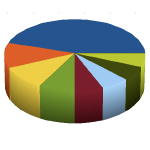 With so much focus on Big Data, I think users forget the basics of different types of analysis. I want to discuss the differences between Data Mining, Hypothesis Testing, Ad-hoc Reporting, and Analytics Reporting. Understanding the differences between these will help marketers and executives communicate with Analysts.
With so much focus on Big Data, I think users forget the basics of different types of analysis. I want to discuss the differences between Data Mining, Hypothesis Testing, Ad-hoc Reporting, and Analytics Reporting. Understanding the differences between these will help marketers and executives communicate with Analysts.
Data Mining
Data mining used to be called Exploratory Data Analysis or EDA. It uses software packages such as SPSS, SAS, and R to do “detective work” on your data. In this practice you are running descriptive statistics, frequencies, and creating scatter plots on the data. The purpose of this exercise is to identify outliers and data clusters that will lead you to an appropriate algorithm to find relationships in the data. Depending on the size of your data set, and software package you use these practices can be quite complex and take some time.
Hypothesis Testing vs. Ad-hoc Reporting
Ad-hoc reporting is diving into the data and finding the answers that someone has requested with a software system you have. This could include creating segments, or looking into demographic data in web analytics or social analytics platforms. In web analytics ad-hoc reporting could entail segmenting out social traffic vs. search traffic and finding differences in behavior. Ad-hoc reporting generally takes a day or less to provide someone with a quick answer to their question.
Hypothesis Testing is different because it is more scientific and deals with raw data. This means that statistical methods such as T-tests need to be administered to state the answer to your question is accurate with a 95% statistical significance. It could also be an ANOVA test to find variances among different groups. Hypothesis tests take a little bit longer than ad-hoc web analytics or social reports as raw data needs to be pulled.
Reporting
Reporting is a general output on metrics that matter to the receiver of the report. Reports can be as large, or as small as client desire. Some clients prefer heavy data reports with many spreadsheets. Others are looking for insights and information to improve their practices. Executive reports tend to have many icons and quick and basic summary metrics.
Related posts: Statistics provides clarity in web marketing analytics, Big vs. Small Data, Small Business Need Analytics